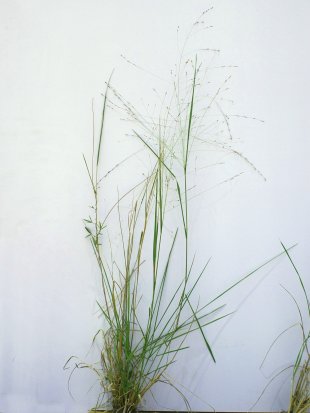
Native millet
SCIENTIFIC NAME: Panicum decompositum
CATEGORY: C4 perennial
IDENTIFICATION TIPS
- A densely tufted, warm-season, sometimes short-lived, perennial to 145cm tall
- Leaves blue-green with a distinct whitish midvein and a keel underneath
- Seedhead is an open panicle to 40cm long and with, more or less, paired unawned spikelets; breaks off and blows away when mature
- Flowers in summer and autumn
CLIMATIC & SOIL REQUIREMENTS
- Widespread and common; often in disturbed or wetter areas; rarely forms dominant stands
- Occurs on a range of soil types, but especially heavy clays and alluvial soils
- Drought and flooding tolerant, but frost sensitive
GRAZING & NUTRITIONAL VALUE
- Moderate to high grazing value
- No digestibility figures are available
- Crude protein 2.2-10.6%
MANAGEMENT STRATEGIES
- Regarded as an important and valuable forage of the floodplains
- Hays-off in winter, but quickly regrows in spring. Produces a good bulk of highly palatable feed after heavy summer rains or flooding
- Can withstand heavy grazing, but overstocking has led to its disappearance in some areas. Its presence on sandy soils is usually a sign of light stocking, but on clay soils it is usually a sign of overstocking
- Persists best under rotational grazing, using moderate grazing pressure (less than 40% utilisation) to prevent plants becoming tall, rank and less palatable. This can be difficult to achieve in good summers when an excess of feed is most likely to be produced
- Establishes easily from seed, which is spread when seedheads break off at maturity and are blown around; seedheads and can pile up against obstructions and form a fire risk
SIMILAR PLANTS
- Hairy panic (Panicum effusum) has dull-green leaves, with distinctive long glandular hairs along the leaf margins

(Flowering plant: H Rose)

